Looking to get in shape for the ski season? Here are the best skiing workouts you can do.
Ski season is upon us, and whether you spent your summer outside or enjoying the work-from-home lifestyle, it’s time to get back to work and get your legs ready for the slopes.
Before we hop into the workouts, let’s talk about what muscles skiing uses.
What Muscles Are Used Skiing?
Skiing uses the whole body, but it is primarily lower-body dominant. The US Ski and Snowboard Team identified that your hip muscles, hamstrings, quadriceps, calves, and muscles in the foot are the primary muscles used while skiing.
But let’s dive a little deeper.
When you move a muscle it is called a contraction. There are three types of contractions, isometric, eccentric, and concentric.
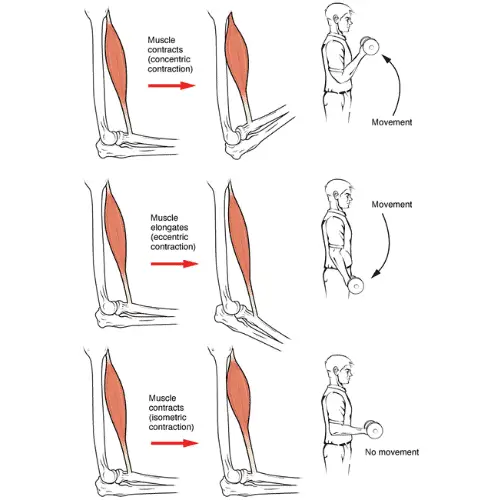
Three Types of Muscle Contractions:
- Isometric – An isometric contraction is when the muscle is activated but is not moving. Examples include your core during a plank and your glutes at the bottom of a squat.
- Eccentric – An eccentric contraction is when the muscle is lengthening. Examples include the lowering phase of a bicep curl and the lowering phase of a squat.
- Concentric – A concentric contraction is when the muscle is shortening. Examples include the raising phase of a bicep curl and when you are straightening your legs.
Skiing is primarily an eccentric contraction. As you turn down the slope, the muscles in your legs lengthen.
So to tailor your workouts specifically for skiing, you need to strengthen your lower body and specifically focus on each exercises’ eccentric (lengthening/lowering) phase.
(Going skiing soon? Learn how to layer for day on the mountain here.)
The Best Workout For Skiing at the Gym
Going to the gym is a great way to get in shape for ski season. But with so many machines and weights, it can be tough to know exactly what exercises you need to do.
To keep it simple, here’s what I recommend.
Do two lower body exercises. Choose either squat, lunge, or bend exercises. These patterns cover all of the lower body muscles you need to work.
I would then superset the two lower body exercises with a push, pull, or a core. Since skiing uses the full-body, you will see stability and strength carry-over from training your upper body and core.
Here are three different ways you can structure your gym training day.
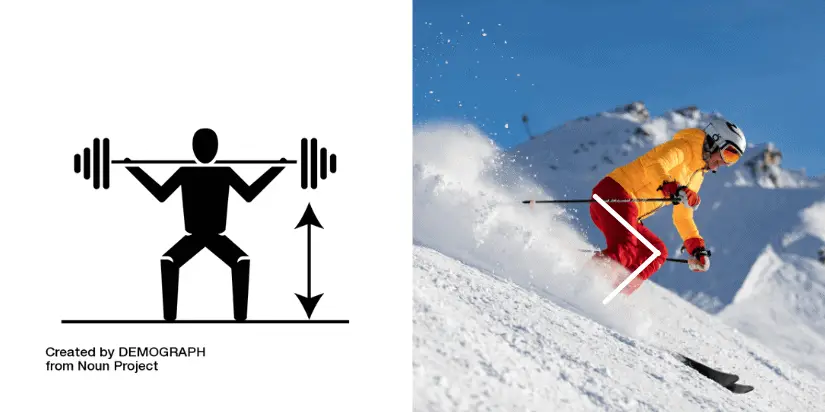
Sample Skiing Gym Workouts
- A1) Barbell Romanian Deadlift 10-15 reps x 3 sets; rest 90 seconds (Bend)
- A2) Cable Chest Press 8-10 reps x 3 sets; rest 90 seconds (Push)
- B1) Dumbbell Goblet Squat 10-15 reps x 3 sets; rest 90 seconds (Squat)
- B2) Dumbbell Row 10-15 reps x 3 sets; rest 90 seconds (Pull)
- A1) Dumbbell Split Squat 10-15 reps x 3 sets; rest 90 seconds (Squat)
- A2) Half-Kneeling Overhead Press 8-10 reps x 3 sets; rest 90 seconds (Push)
- B1) Dumbbell Single Leg Romanian Deadlift 10-15 reps x 3 sets; rest 90 seconds (Bend)
- B2) Plank 1 minutes x 3 sets; rest 90 seconds (Core)
- A1) Wall Sit 45 seconds – 1 minute x 3 sets; rest 90 seconds (Squat)
- A2) Half-Kneeling Cable Row 8-10 reps x 3 sets; rest 90 seconds (Pull)
- B1) Dumbbell Walking Lunge 10-15 reps x 3 sets; rest 90 seconds (Lunge)
- B2) Bench Dips 8-10 reps x 3 sets; rest 90 seconds (Push)
Perform A1 and A2 back to back until you complete three sets of each exercise. Then move on to B1 and B2.
A Word on Tempo
As I mentioned earlier, skiing is an eccentric activity. So you want to spend as much time as possible in the eccentric part of your lower-body exercises.
In the above workouts, spend 2-4 seconds in the lowering phase during each repetition for your lower-body exercises. This will make the exercise tougher, so you may have to go with lighter weights.
The Best at Home Workout for Skiing
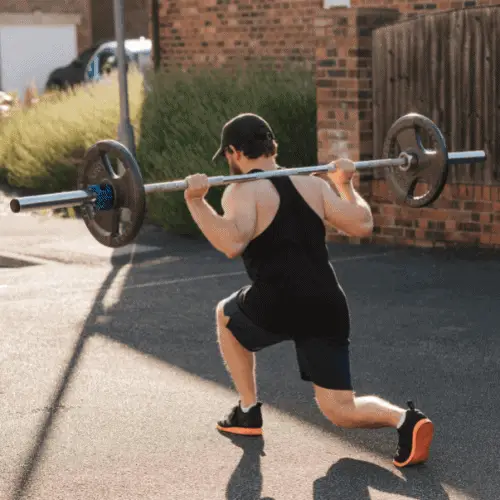
Going to the gym is great, but nothing beats working out in your home. It’s a great way to save time, and it’s easier to focus because there are fewer distractions.
The exact workout you do at home will depend on the equipment you have. If you have a lot of equipment, you can mirror a gym workout. But you don’t need a lot to be effective. A pair of adjustable dumbbells and a couple of bands can go a long way.
Here are some at-home bodyweight workouts you can do to get ready for skiing.
Sample At Home Skiing Workouts
- A1) Hip Thrusts 10-15 reps x 3 sets; rest 90 seconds (Bend)
- A2) Push ups 8-10 reps x 3 sets; rest 90 seconds (Push)
- B1) Air Squat 10-15 reps x 3 sets; rest 90 seconds (Squat)
- B2) Odd Object Row 10-15 reps x 3 sets; rest 90 seconds (Pull)
- *If you can’t do push ups do knee or incline pushups
- A1) Split Squat 10-15 reps x 3 sets; rest 90 seconds (Squat)
- A2) Seated Wall Angels 8-10 reps x 3 sets; rest 90 seconds (Push)
- B1) Single-Leg Romanian Deadlift 10-15 reps x 3 sets; rest 90 seconds (Bend)
- B2) Plank 1 minute x 3 sets; rest 90 seconds (Core)
- A1) Wall Sit 45 seconds – 1 minute x 3 sets; rest 90 seconds (Squat)
- A2) Superman Hold 8-10 reps x 3 sets; rest 90 seconds (Pull)
- B1) Walking Lunge 10-15 reps x 3 sets; rest 90 seconds (Lunge)
- B2) Bench Dips 8-10 reps x 3 sets; rest 90 seconds (Push)
Remember to focus on the eccentric phase of the exercise.
Cardio for Skiing
Now let’s talk cardio.
While it’s not as sexy as lifting weights, you need cardiovascular fitness to ski.
Thankfully you don’t need to be an ultra runner to see the benefits of cardio.
I recommend you go for walks, hikes, and bike rides to build your cardio.

Cardio Workouts for Skiing
Walking
Walking is great because you can do it anywhere, and it helps build your postural endurance (your ability to maintain an upright posture), something you need to spend all day skiing.
To start, go for 2-3 walks a week. Every week, increase the distance a little bit at a time. If you struggle to find time, use the bookmarking strategy. Start and end your days with two shorter walks.
Hiking
Just like walking, hiking will build your cardio and postural endurance. But since hikes are usually on uneven terrain it will also build some muscles.
Since hikes can be tough to access, go on one hike per week. On the days you cannot hike, go for walks around your neighborhood. If you can hike multiple days a week, repeat a hike until you can complete it with ease, then start increasing either distance of elevation gain.
Biking
Biking is a great way to build your cardio without any extra impact on your joints. But it does not build any postural endurance.
Just like with walking and hiking, try to bike two days a week. Slowly build your distance over time as your route becomes easier.
Weekly Training Plan for Skiing
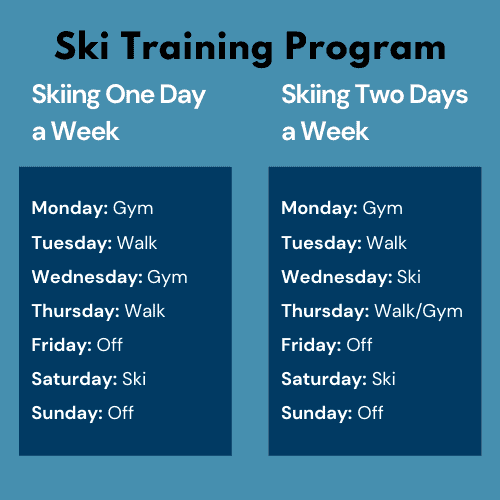
We covered multiple types of workouts and cardio to get you ready for skiing.
But how do you fit this all into a week?
Here are some sample training weeks you can follow. The first will be for someone who can only ski on weekends. The other will be for someone who can ski once during the week and once on the weekends.
Training plan not fitting your schedule? Keep the same structure training order but assign them to different days as needed.
Weekend-Only Training Plan
- Monday: Gym or at-home workout
- Tuesday: Walk
- Wednesday: Gym or at-home workout
- Thursday: Walk
- Friday: Off
- Saturday: Ski
- Sunday: Off
2 Days Skiing a Week Training Plan
- Monday: Gym or at-home workout
- Tuesday: Walk
- Wednesday: Ski
- Thursday: Walk or Gym or at-home workout (depending on intensity of Wednesday)
- Friday: Off
- Saturday: Ski
- Sunday: Off
In the above training plan, you’ll notice that one option is to train only once per week. I choose this because the goal of the program is to support skiing. You don’t want to be sore when you’re on the hill.
Skiing is an amazing winter sport, but it’s physically demanding. So start doing these workouts during the week, and you will see your fitness on the slopes improve nicely.
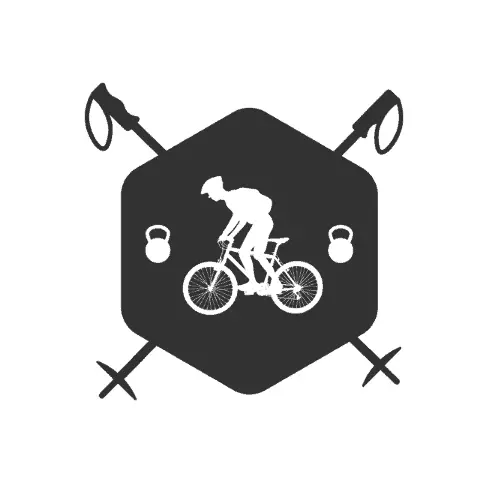


Comments are closed.